This picture shows where Isidis Planitia is on Mars. The Mars globe on the left shows how Mars would look to your eyes if you were close to Mars. The globe on the right shows how high (or low) places on Mars are. Places that are high look red or orange on the right globe. Places that are low look green or blue on the right globe. You can see that Isidis Planitia is low because it is blue.
Click on image for full size
NASA/JPL/Malin Space Science Systems and the Mars Orbiter Laser Altimeter (MOLA) Team at NASA's Goddard Space Flight Center
Isidis Planitia
Isidis Planitia is the name of a place on Mars. Isidis Planitia is a
very flat plain. It is inside the bottom of a very old crater. Isidis
Planitia is big. It is about 1,500 km (930 miles) across. That is quite
a bit bigger than the state of Texas!
A comet or a big asteroid that crashed into Mars probably made the crater
that Isidis Planitia is in. Scientists think that happened a very long
time ago. They thin the comet or asteroid hit Mars three or four billion
years ago.
Some scientists think Mars had lakes or oceans on it a long time ago.
It doesn't any more. Mars is very dry. If Mars did have lakes or oceans
in the past, Isidis Planitia might have been filled with water a long
time ago.
A spacecraft called Mars
Express got to Mars in December 2003. Mars Express
had a part that landed on Mars. That part is called Beagle
2. Beagle 2 landed in the eastern
part of Isidis Planitia. Beagle 2 is supposed to look for life on
Mars. Scientists think that places that once had water are good places
to look for life.
You might also be interested in:
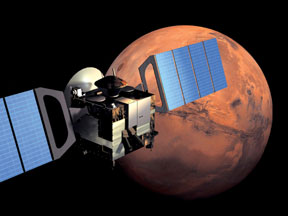
The European Space Agency (ESA) launched a mission to Mars in June of 2003. The mission is called "Mars Express". The Mars Express spacecraft has two parts. One part will orbit Mars for at least one Martian
...more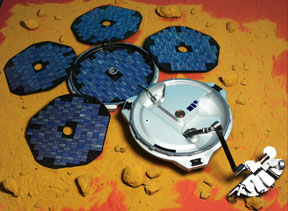
The European Space Agency (ESA) launched a mission to Mars in June of 2003. The mission is called "Mars Express". The Mars Express spacecraft has two parts. One part will orbit Mars for at least one Martian
...more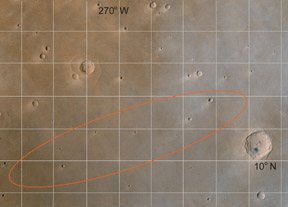
The European Space Agency (ESA) launched a mission to Mars in June of 2003. The mission is called "Mars Express". The Mars Express spacecraft has two parts. One part will orbit Mars for at least one Martian
...more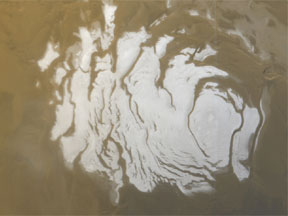
The first spacecraft to take a picture of the South Pole of Mars was Mariner 7. The South Pole of Mars has craters, sand dunes, and the polar ice cap. The south pole of Mars is important because that's
...more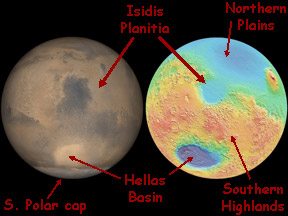
Isidis Planitia is the name of a place on Mars. Isidis Planitia is a very flat plain. It is inside the bottom of a very old crater. Isidis Planitia is big. It is about 1,500 km (930 miles) across. That
...more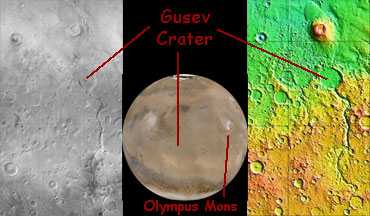
Gusev Crater is an impact crater on Mars that looks as though a lake may have once filled it in the distant past. One of the two Mars Exploration Rovers (MER) will explore Gusev Crater beginning in January
...more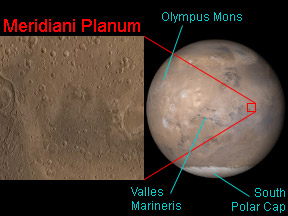
Meridiani Planum is the name of a flat plain on Mars. Opportunity landed there. Opportunity is one of the Mars Exploration Rovers. Meridiani Planum is very flat. "Planum" means "plain". Scientists think
...more














